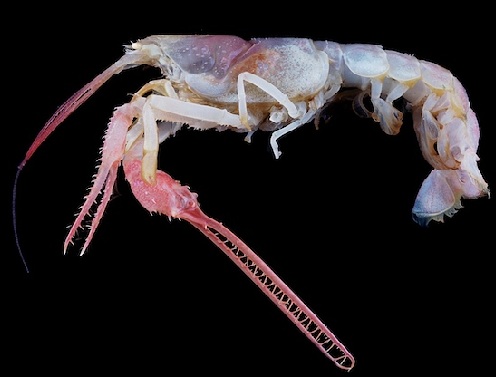Science News
Census of Marine Life

The results of the Census of Marine Life are coming. They will be officially announced on October 4th with much fanfare, but some of the results are beginning to see light. In April, we reported on the microbial portion of the census, and earlier this week, the open access journal PLoSOne published twelve papers as part of the study.
The findings are astounding and the images amazing! (Check out New Scientist and National Geographic for images and video of some of the stranger creatures catalogued.)
According to Scientific American:
The latest findings profile the diversity and distribution of known species in 25 important marine areas, including temperate, tropical and polar oceanic waters such as the Caribbean, Baltic and Mediterranean Seas as well as the Gulf of Mexico. The data provide a baseline for marine diversity that will be useful when assessing the future impacts of humans and nature on pelagic life.
The results from the marine areas show over 230,000 species, although scientists believe that there are more than a million more to be discovered. Japanese and Australian waters appear to be the most diverse, with about 33,000 species each.
The breakdown of life may surprise you. Science News reports that:
Big stuff… such as species of whales or turtles or sea lions, barely amounts to a drop in the oceanic bucket. Census data indicate that crustaceans are the largest chunk of known marine creatures, including crabs, shrimp and the unsung but ecologically crucial krill.
The full breakdown follows:
- 19% Crustaceans (including crabs, lobsters, crayfish, shrimp, krill and barnacles),
- 17% Mollusca (including squid, octopus, clams, snails and slugs)
- 12% Pisces (fish, including sharks)
- 10% Protozoa (unicellular micro-organisms)
- 10% algae and other plant-like organisms
- 7% Annelida (segmented worms)
- 5% Cnidaria (including sea anemones, corals and jellyfish)
- 3% Platyhelminthes (including flatworms)
- 3% Echinodermata (including starfish, brittle stars, sea urchins, sand dollars and sea cucumbers)
- 3% Porifera (including sponges)
- 2% Bryozoa (mat or 'moss animals')
- 1% Tunicata (including sea squirts)
The remaining categories are other invertebrates (5%) and other vertebrates (2%). The scarce 2% of species in the "other vertebrates" category includes whales, sea lions, seals, sea birds, turtles and walruses. Thus some of the best-known marine animals comprise a tiny part of marine biodiversity.
These results are incredibly important so scientists can protect the life that is out there from various threats. Again, from Scientific American:
The researchers emphasize overfishing as the top threat to marine life worldwide. It impacts diversity and alters food webs in the sea by depleting the targeted, exploited species as well as reducing other animals commonly found in by-catch. Other threats of chief concern highlighted in the report are habitat destruction, pollution, invasive species and warmer waters due to climate change.
Image by Tin-Yam Chan, CoMarge